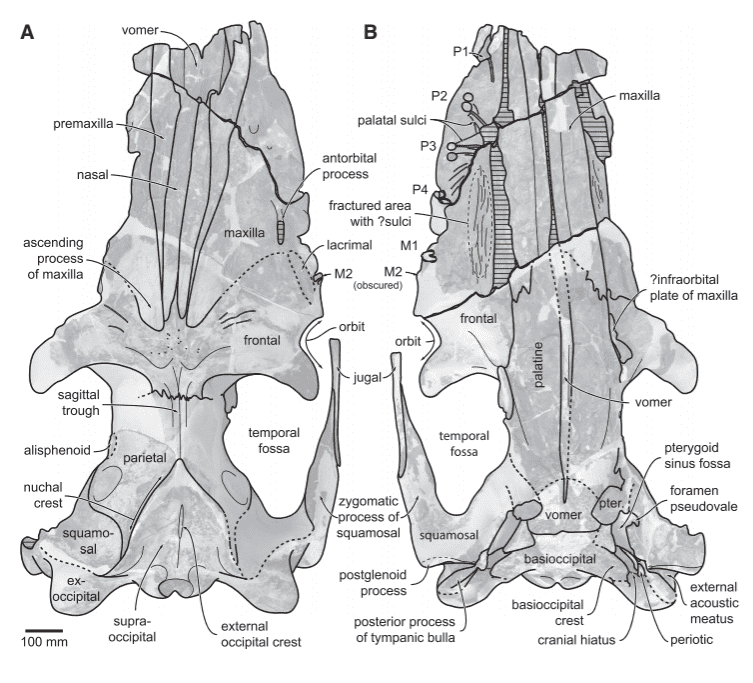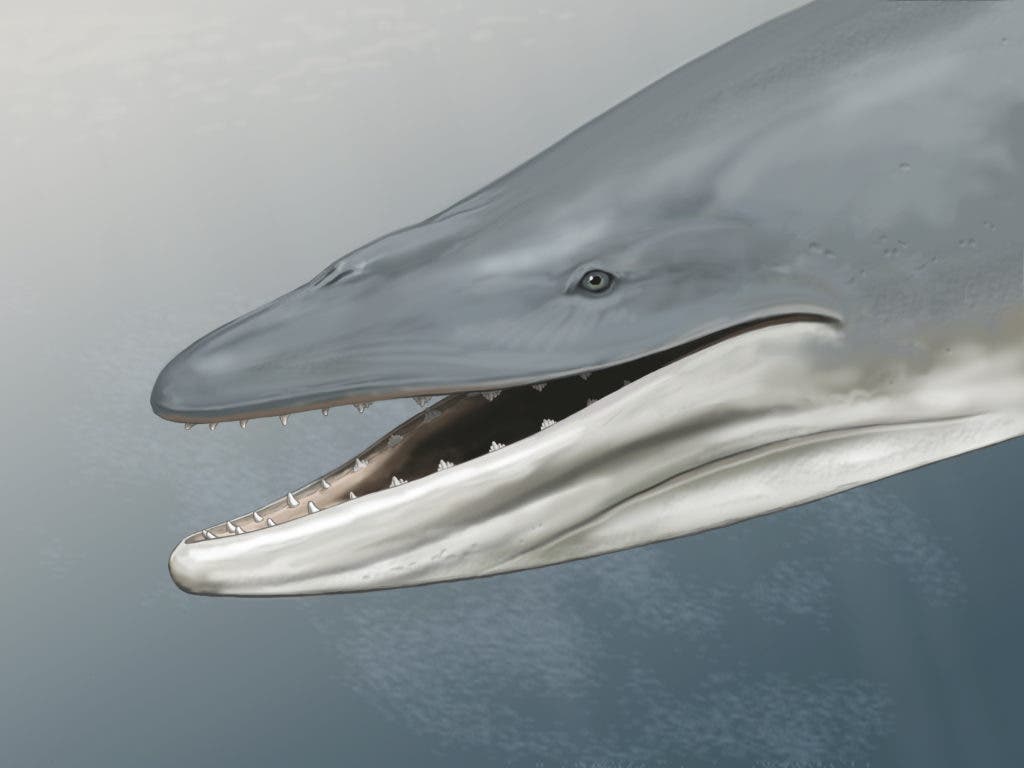Baleen whales (parvorder Mysticetes) haven’t always been ‘baleen’, new research shows — and this unique adaptation hasn’t evolved from teeth, as previously suspected.
Today’s baleen whales are truly distinctive. Their most distinctive feature, the baleen — the comb-like filter-feeder system such whales use to capture krill — is so unique, we’ve used it to name the whole group. According to new research, however, the group didn’t always sport this specialized feeding apparatus. Just 34 million years ago, they were using good ol’ fashion teeth to do some good ol’ fashioned chomping with, one fossil reveals.
Teethy giants
Llanocetus denticrenatus is an ancient relative of our modern gentle giants, like humpback and blue whales,” says lead author Felix Marx of the Royal Belgian Institute of Natural Sciences. “Unlike them, however, it had teeth, and probably was a formidable predator.”
Although you wouldn’t tell by their girth, whales actually originate from land mammals. Because of this, researchers knew the whales had to pick up filter-feeding after retreating back to the oceans (since you can’t really filter-feed on land). Up until now, common wisdom held baleen whales first started filter-feeding back in the days they still had teeth, but this may not have been the case.

Skull of Llanocetus denticrenatus. (A) Dorsal view. (B) Ventral view.
Image credits R. Ewan Fordyce, Felix G. Marx, (2018) / Current Biology.
Just like modern whales today, Llanocetus denticrenatus sported a series of distinctive grooves on the roof of its mouth (palate), the team reports. These grooves create the space necessary for blood vessels that supply the baleen in present-day Mysticetes. In Llanocetus, however, the grooves are clustered around teeth sockets — which suggests that they were feeding gums and teeth, not baleen. Baleen is fragile and would have been too exposed in such areas, liable to be crushed. Instead, the Marx suspects that the beast “simply had large gums and, judging from the way its teeth are worn, mainly fed by biting.”
Given that Llanocetus could grow to about 8 meters (26.2 feet), it likely had to do a lot of biting to keep reasonably fed. Thankfully for it, it came equipped for the job, the team finding a row of sharp, widely-spaced teeth with marked wear embedded in its rostrum.
I asked Ewan Fordyce, Professor at the Department of Geology at the University of Otago, New Zealand and paper co-author about what Llanocetus‘ meals likely consisted of. He admits that the team is “not sure” yet what this toothy whale hunted, but that its anatomy can yield some clues:
“It was probably not a top predator, Because these small teeth could only deal with medium-sized prey,” he told ZME Science in an e-mail. “It ate prey that was processed in part at least by teeth that could shear and pierce. Perhaps took small to medium-sized fish, not too bony, and maybe squid.”

Feeding Apparatus of Llanocetus denticrenatus.
Image credits R. Ewan Fordyce, Felix G. Marx, (2018) / Current Biology.
The team’s findings suggest that baleen actually evolved from the gums, not the teeth themselves. The soft tissue gradually became more complex over evolutionary time and developed into the baleen, the team writes. This transition likely happened after the whales had already lost their teeth, and switched from biting larger victims to slurping in small pray. Marx and Fordyce believe that baleen evolved as a way to more effectively keep such prey inside the animals’ mouth — meaning they had to already be doing it for evolution to favor the baleen.
One factor that could be behind this change of menu is simple economics:
“Felix and colleagues have made the point that by feeding on small food, baleen whales move down the food chain,” Fordyce added for ZME Science, “[where] they have more resources than if they were at the top of the food chain.”
The results show that the evolution of baleen whales was more convoluted than previously thought, the team says. Next, they’ll try to get a better understanding of the baleen whales’ evolutionary path.
The paper “Gigantism precedes filter feeding in baleen whale evolution” has been published in the journal Current Biology.










